We are pleased to announce a new addition to our archives! The Folly Theater Collection (SC223), which contains over 300 boxes full of vintage burlesque and performing arts history, is now available to researchers in the Missouri Valley Room.
As Kansas City’s oldest theater in operation, the Folly has assumed various names and identities throughout its 120+ year lifespan—from a vaudeville, burlesque, and Shakespearean playhouse, to an X-rated movie theater, potential parking lot, and finally, a restored performing arts venue worthy of the National Register of Historic Places.
Let’s explore the complex history of the “Grand Old Lady of 12th Street” and the countless performers who have graced her stage.
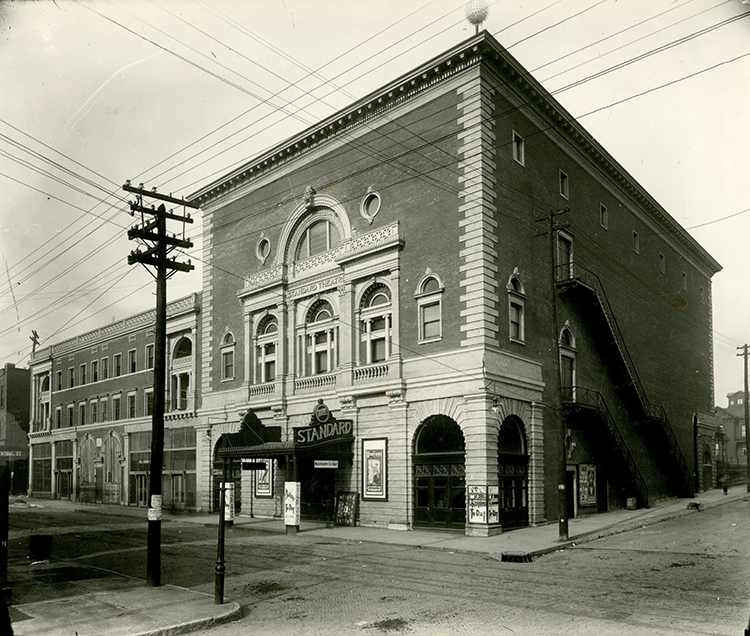
Standard Theater, 1900. SC223 Folly Theater Collection.
THE STANDARD THEATER (1900)
For starters, the Folly was not always the Folly. The familiar building at 12th and Central first opened as the Standard Theater on September 23rd, 1900, with a production of The Jolly Grass Widows. Described as a playhouse of “polite burlesque,” the theater was owned by Colonel Edward Butler, a St. Louis businessman, and managed by his son James Butler.
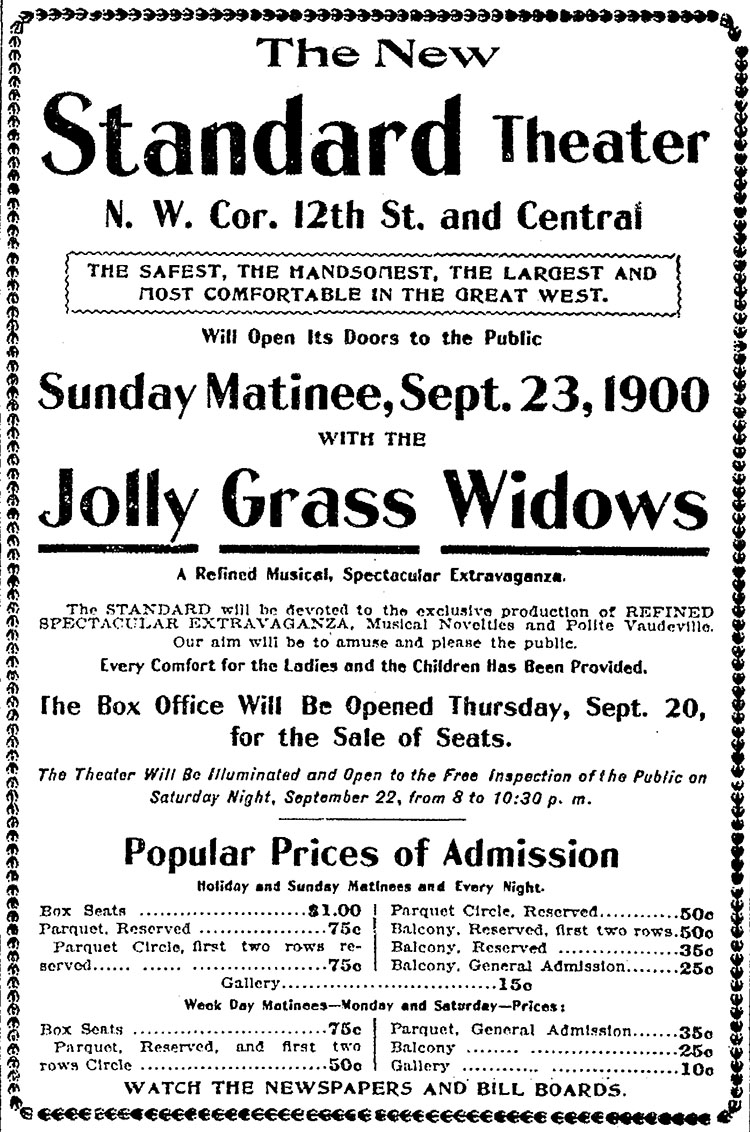
Kansas City Star advertisement, September 16, 1900.
Architect Louis Singleton Curtiss designed the Standard Theater. Its distinctive façade bears stylistic elements—such as the triple arch window—inspired by the work of Renaissance architect Andrea Palladio. The theater was also outfitted with incandescent lightbulbs, a cutting-edge feature at the time.
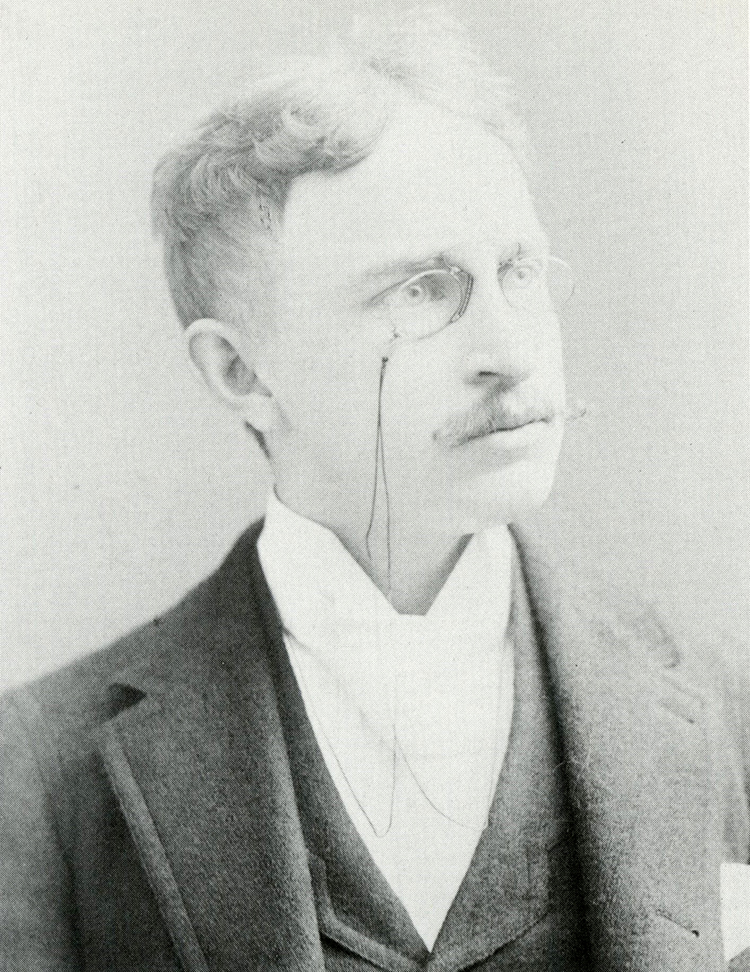
Architect Louis Singleton Curtiss in 1892.

Standard Theater architectural drawing, south elevation. SC223 Folly Theater Collection.
THE CENTURY THEATER (1901-1922)
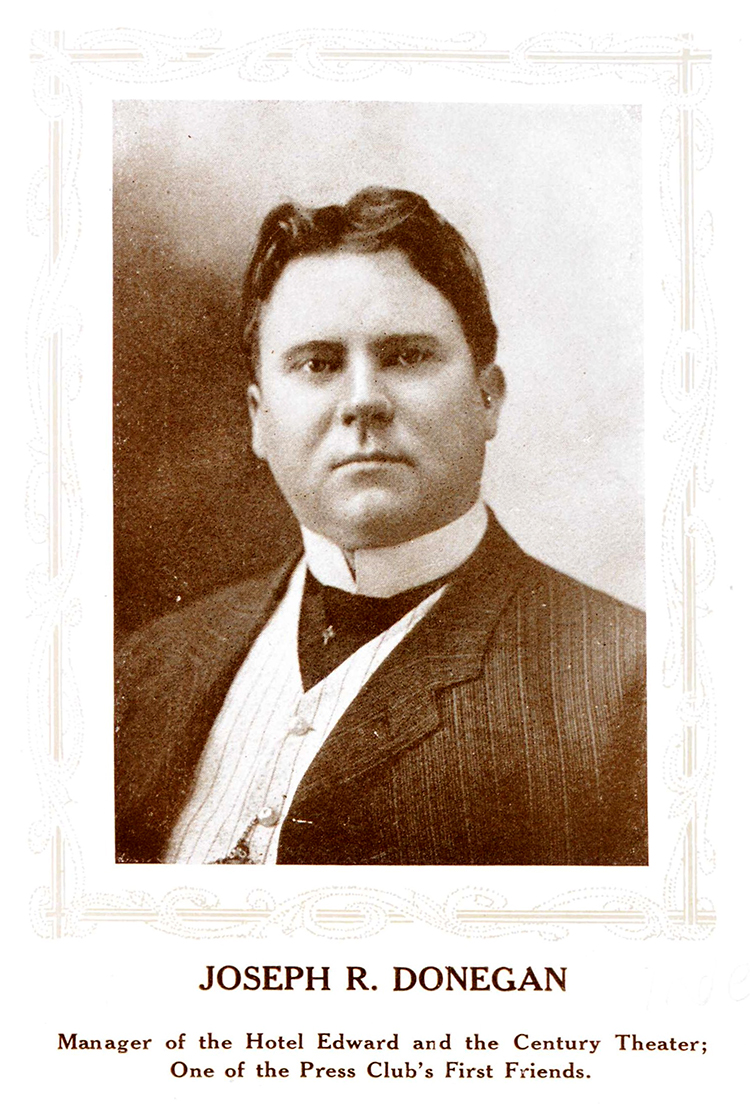
Joseph R. Donegan.
By the 1901-1902 season, the Standard Theater was renamed the Century and was under the management of Joseph Donegan. Affectionately called the “Angel of Twelfth Street,” Donegan also operated the neighboring Edward Hotel and was a key figure in Kansas City nightlife. The Century’s repertory expanded to include plays, burlesque comedies, boxing matches, and vaudeville acts. Prize fighters Jack Dempsey and Jack Johnson both appeared at the Century, along with vaudeville stars Fanny Brice, Al Jolson, and Eddie Foy.
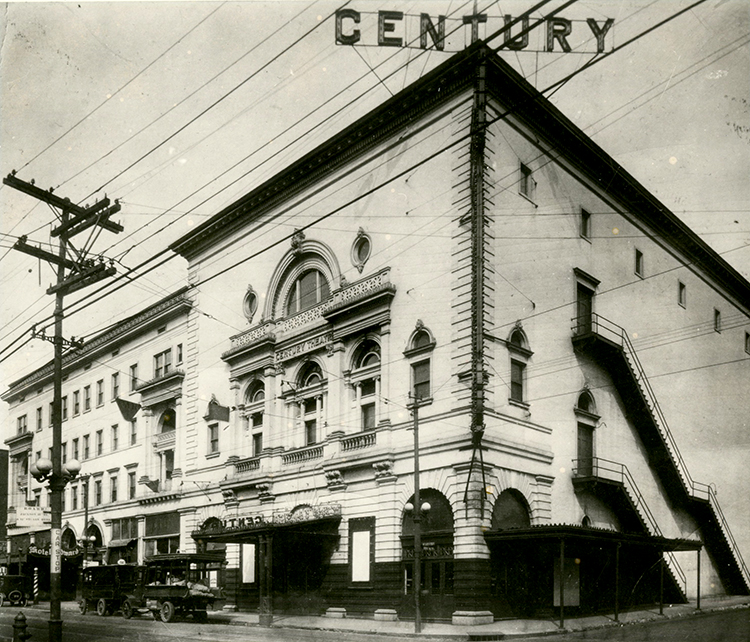
Century Theater with adjoining Edward Hotel. SC223 Folly Theater Collection.
On May 2, 1920, a fire caused substantial damage to the theater during a performance. According to The Kansas City Star, the fire was caused by faulty wiring and began under the flooring of the west gallery. The Century later closed for repairs.
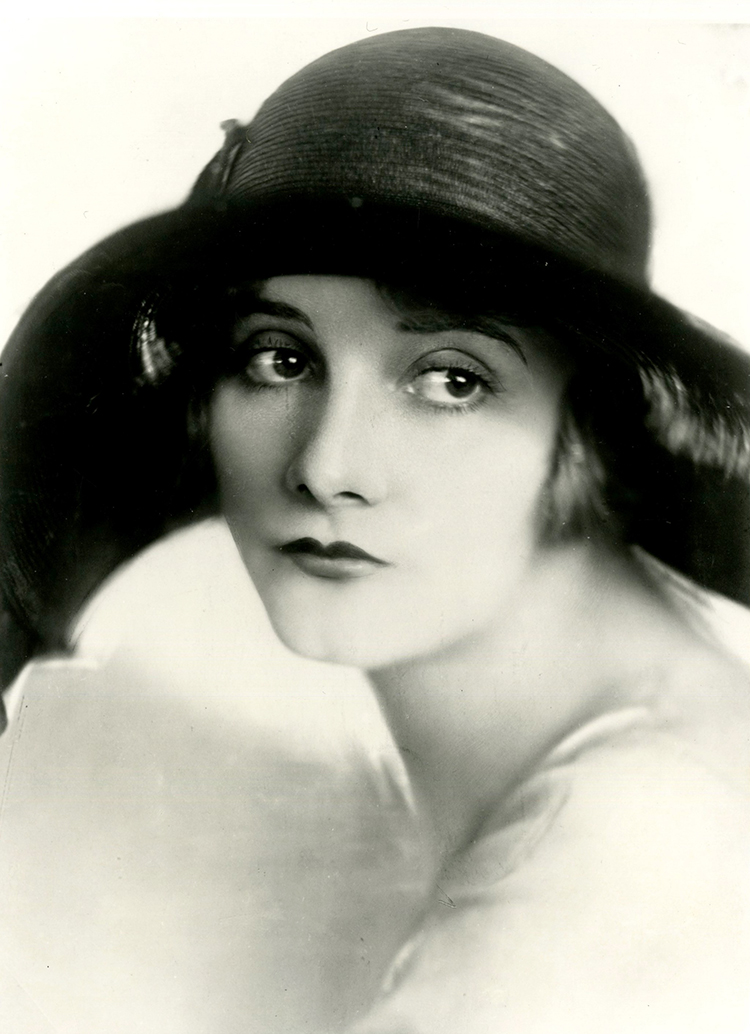
Kansas City native Jeanne Eagels debuted at the Century (now the Folly Theater) in a 1902 production of Uncle Tom’s Cabin. She would go on to become a Broadway star and Academy Award nominee for her role in the 1929 film The Letter.
SHUBERT MISSOURI THEATER (1923-1932)
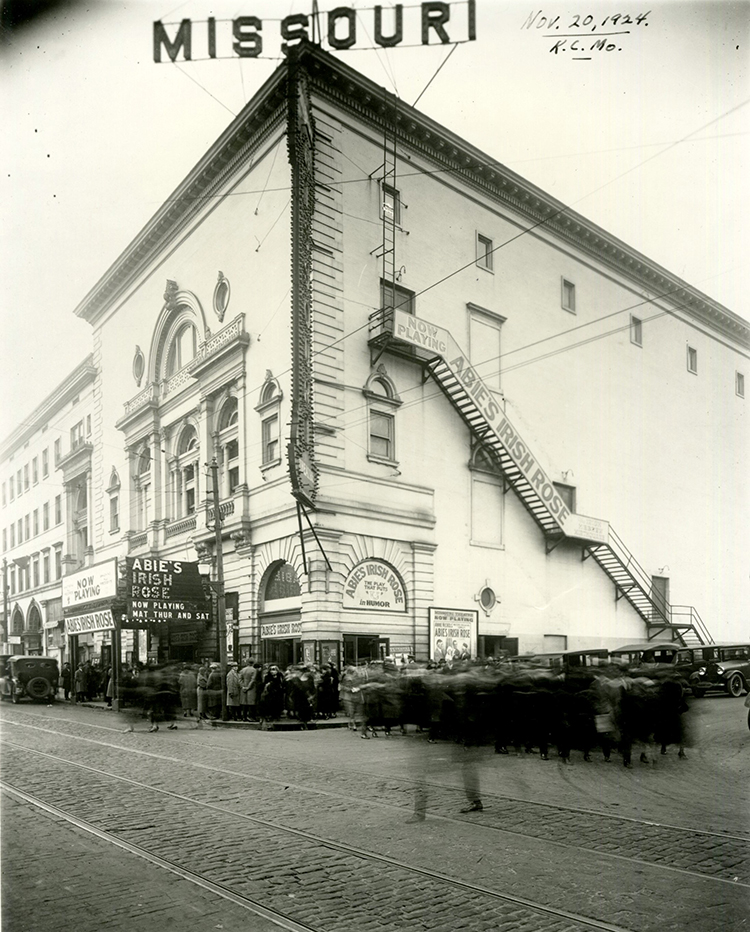
Shubert Missouri Theater, November 20, 1924.
After a $128,000 remodel, Lee and J.J. Shubert of New York took over the building lease. The theater was rechristened the Shubert Missouri and opened in the fall of 1923. During the Shubert years, it became a “legitimate theater,” presenting Shakespearean plays and many performers on the cusp of stardom, such as the Marx Brothers, Humphrey Bogart and Shirley Booth.
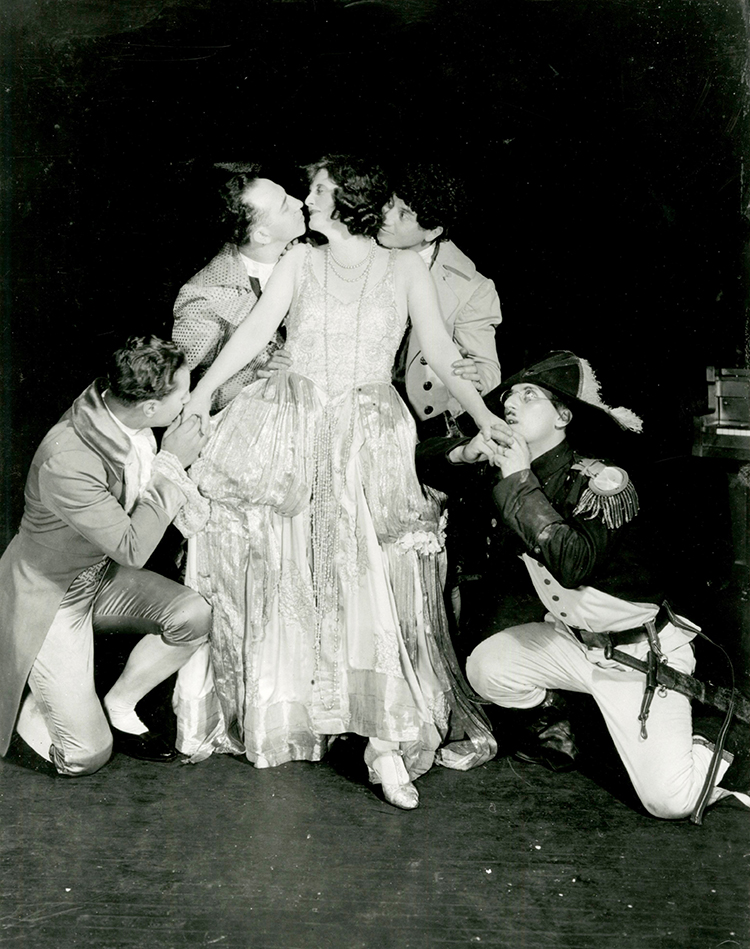
Before Hollywood stardom, the Marx Brothers performed at Shubert’s Missouri Theater (now the Folly Theater) in December 1923. Their show I’ll Say She Is ran for three weeks, including a Christmas day matinee, and was a huge success.
Bogart, then an unknown actor, would appear in a 1924 production of Meet the Wife, while Booth performed at the theater with the National Players in 1927-1928 season. Shortly after, the Shuberts began to sublease the theater to a burlesque troupe. Gypsy Rose Lee, who would become one of the most well-known burlesque stars, made her burlesque debut there in 1929. The Shubert Missouri lasted until 1932, when it closed during the Depression.
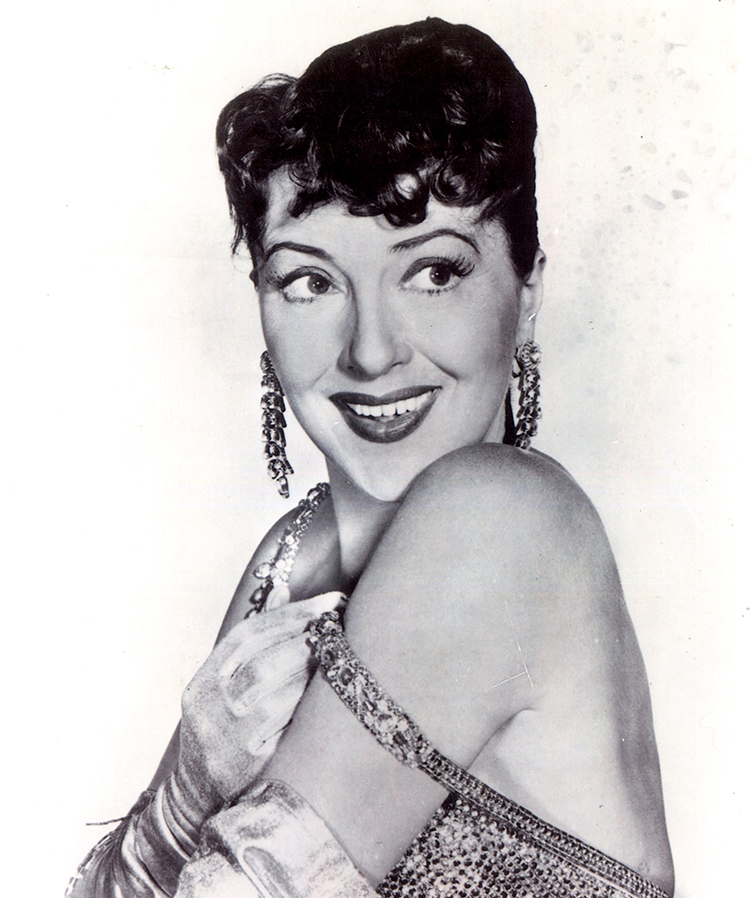
One of the most famous burlesque stars, Gypsy Rose Lee appeared in her first burlesque show at the Folly Theater (then the Missouri Theater) in 1929. Lee’s memoirs were later adapted into the stage musical Gypsy.
GOLDEN ERA OF FOLLY BURLESQUE (1940s-1950s)
The building again reopened for regular shows in 1941, this time as the Folly Burlesque. The theater was now primarily a burlesque house, showing striptease acts by Gypsy Rose Lee, Tempest Storm, Sally Rand, and many others. During World War II, the theater held up to five shows per day for soldiers traveling through Union Station. The Folly also featured famous comedians, such as Pinky Lee, during its burlesque heyday.
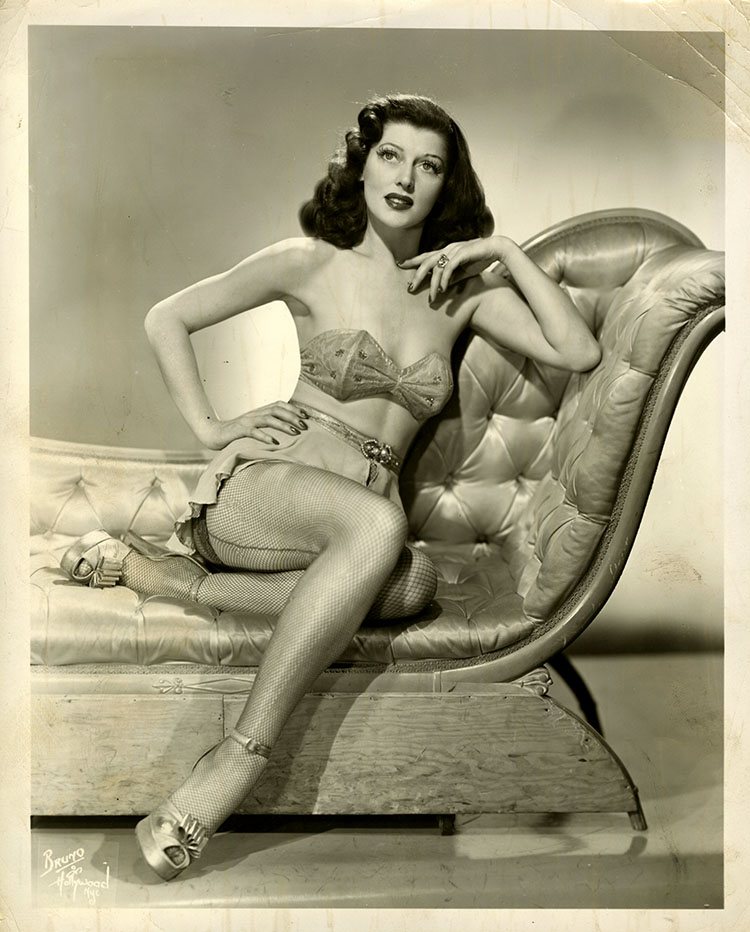
“Statuesque Venus” Ceil Von Dell was a favorite among Folly audience members. She appeared at the theater multiple times between 1944 and 1957, her act often paired with comedians such as Billy Hagan and Cliff “Snuffy” Cochran.

Comedian Cliff "Snuffy" Cochran. SC223 Folly Theater Collection.
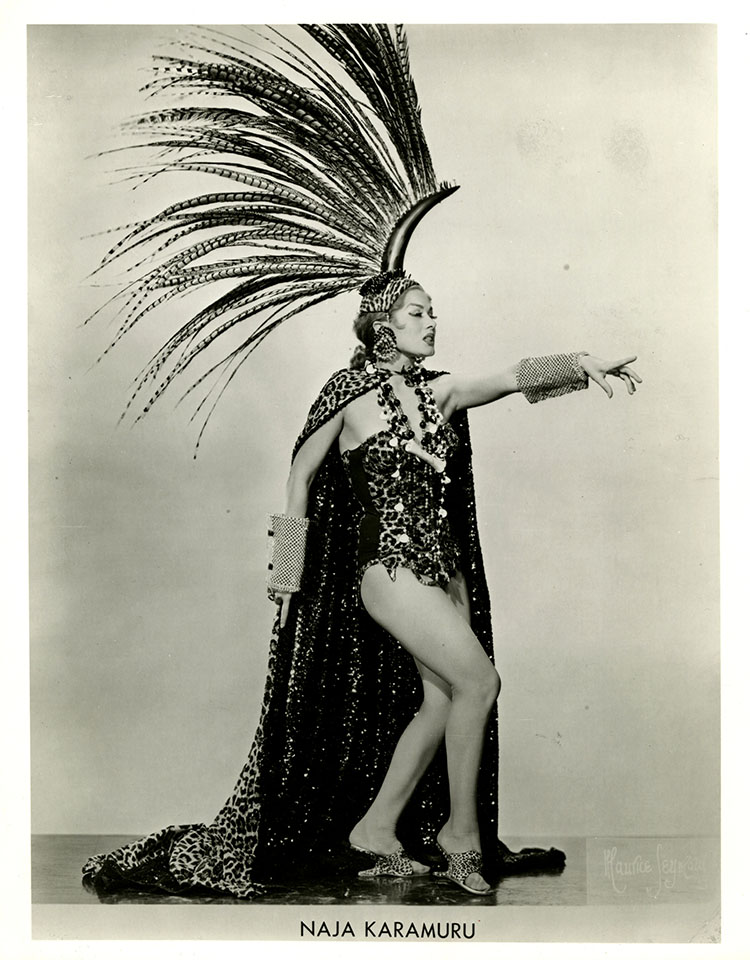
Dubbed “Brazil’s answer to Jayne Mansfield” Naja Karamuru was known for incorporating live snakes into her dances—including pythons, cobras, and boa constrictors. She likely appeared at the Folly Theater during the 1950s, in the midst of its burlesque heyday.
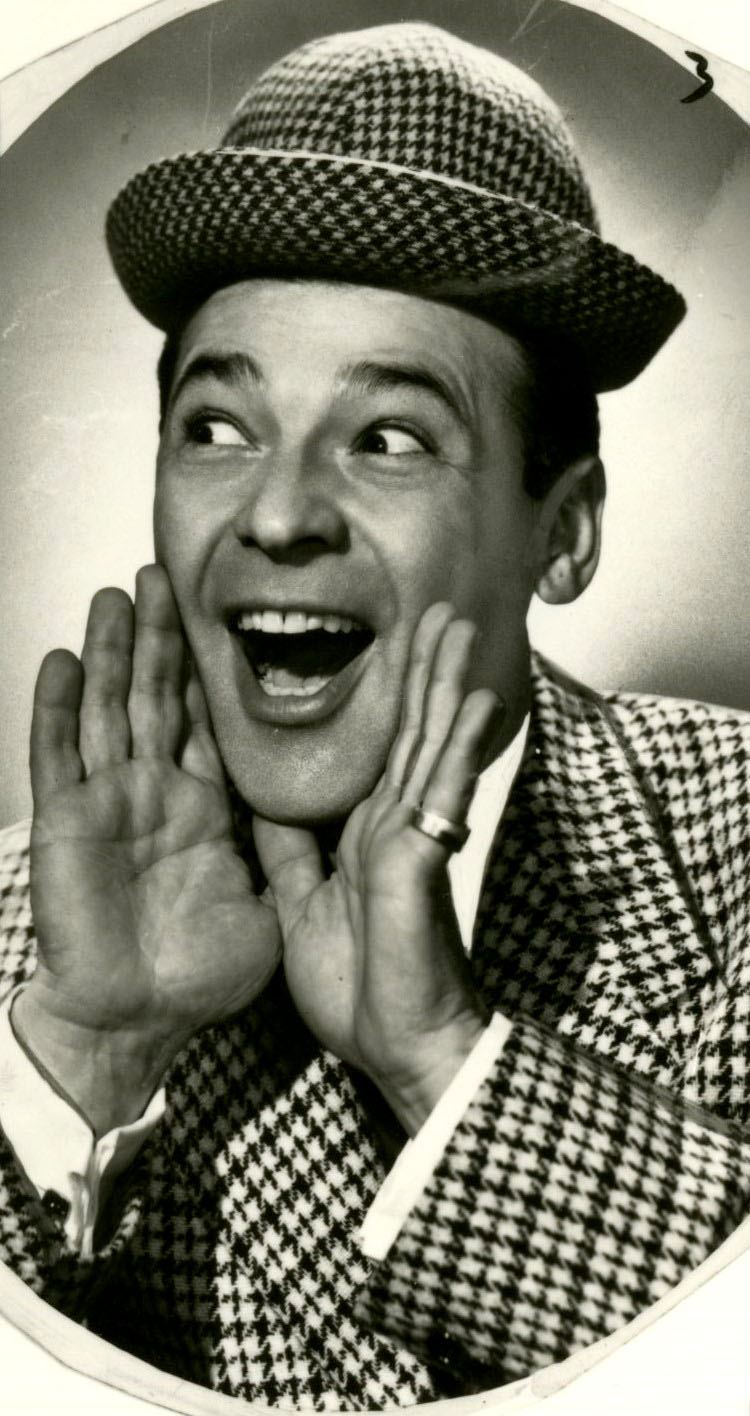
Comedian Pinky Lee. SC223 Folly Theater Collection.
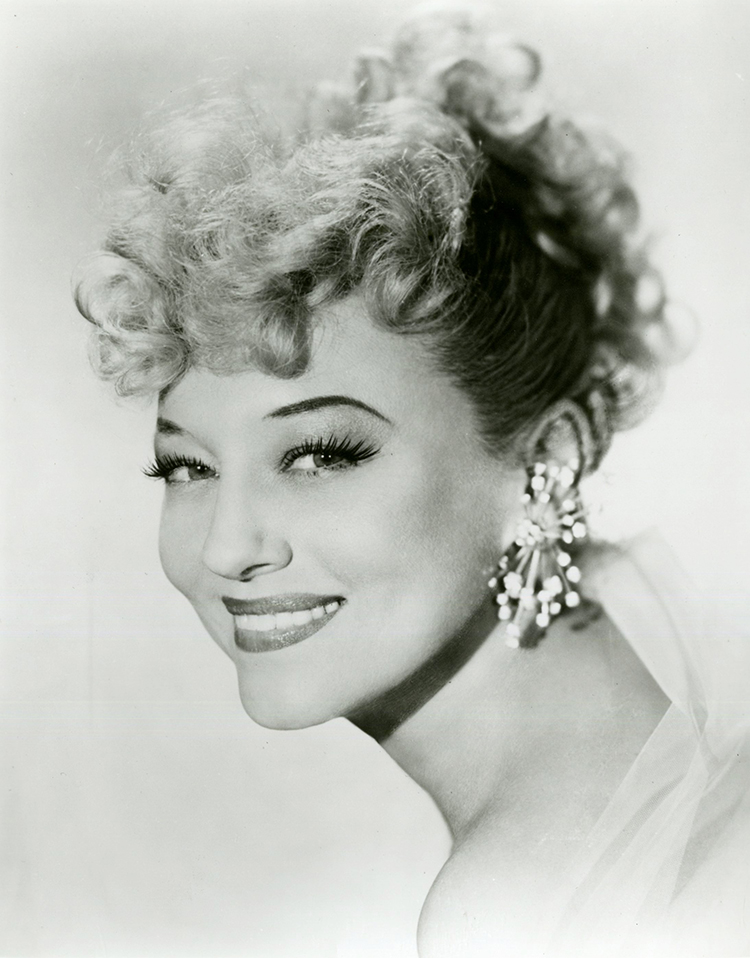
Before becoming the legendary “fan dancer,” Kansas City native Sally Rand began her career as a chorus girl while attending Central High School. In 1976, she returned at age 72 to serve as auctioneer in “Strip the Folly,” a benefit for the theater’s restoration. The Folly Theater Collection includes one of her autographed fans.

Hailed as “The Queen of Burlesque,” the fiery Tempest Storm was in high demand at the Folly Theater throughout the 1950s. Storm, who continued her trade into her 80s, would later perform in the Folly’s 1983 Big Bad Burlesque show. She was also a guest of honor at the theater’s reopening gala and 90th birthday celebration.
DECLINE & RESTORATION (1960s-1981)
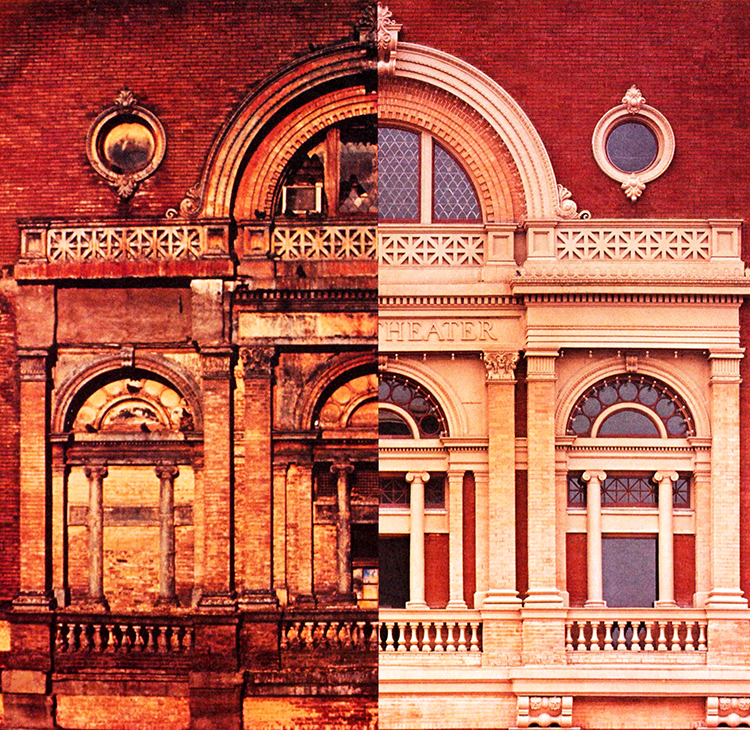
Brochure showing the Folly Theater south façade before and after restoration. SC223 Folly Theater Collection.
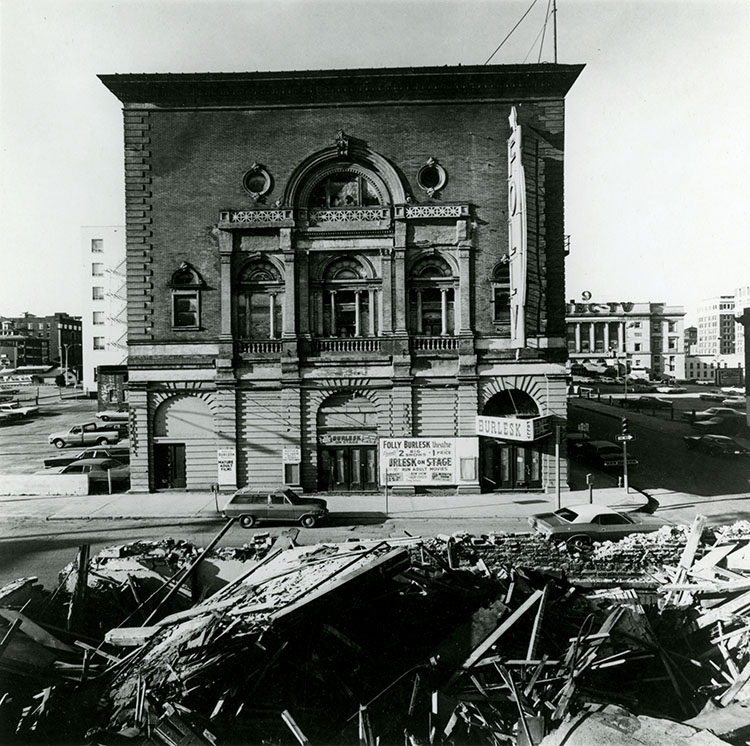
The Folly Theater in disrepair during the 1970s. SC223 Folly Theater Collection.
By the 1960s, burlesque had become less popular, and the Folly began to decline. Dancers and live shows were eventually replaced with adult films and, in 1969, an arsonist caused significant damage to the western portion of the building. After barely surviving as an X-rated movie house, the theater finally closed its doors in January of 1974, by then dilapidated from years of neglect. The building was slated to become a future parking lot.
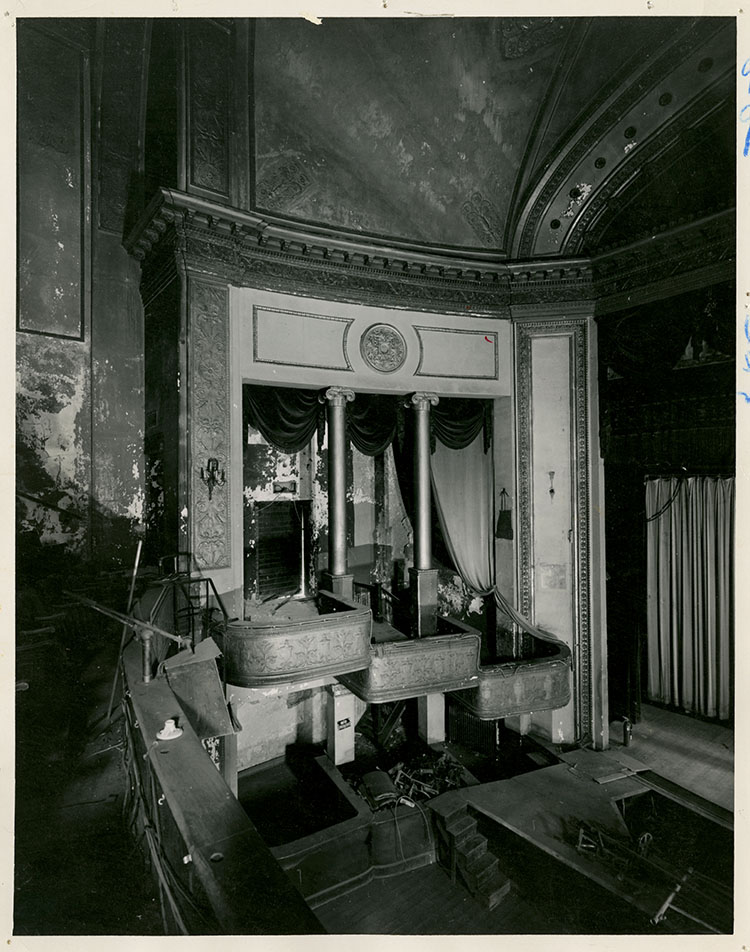
Folly Theater interior, ca. 1970s. SC223 Folly Theater Collection.
Amid bids for the Folly’s demolition, Joan Kent Dillon and William Deramus III led a campaign to save the building. By June of 1974, the theater was placed on the National Register of Historic Places, and Dillon and architect Bob Berkebile began discussing its restoration. The Performing Arts Foundation, a non-profit organization, merged with Standard Redevelopment Corporation and purchased the building with funds raised from various foundations and community sources.
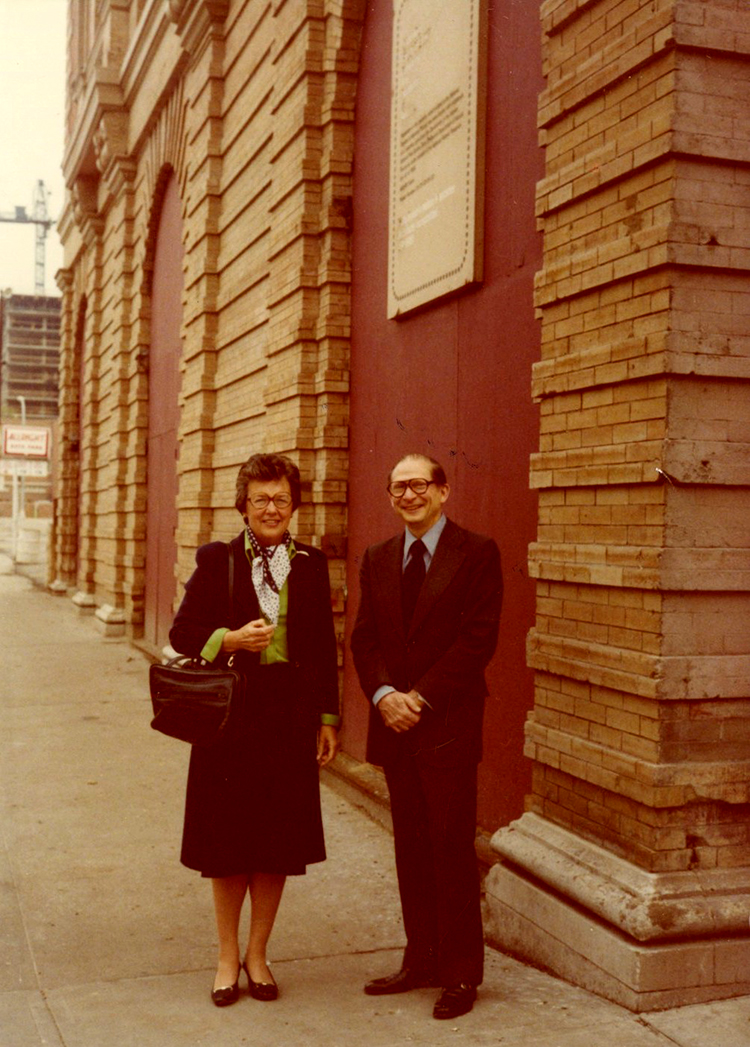
Historic preservation activist Joan Kent Dillon with Dr. Cyril Harris, Professor of Architecture, June 1978.
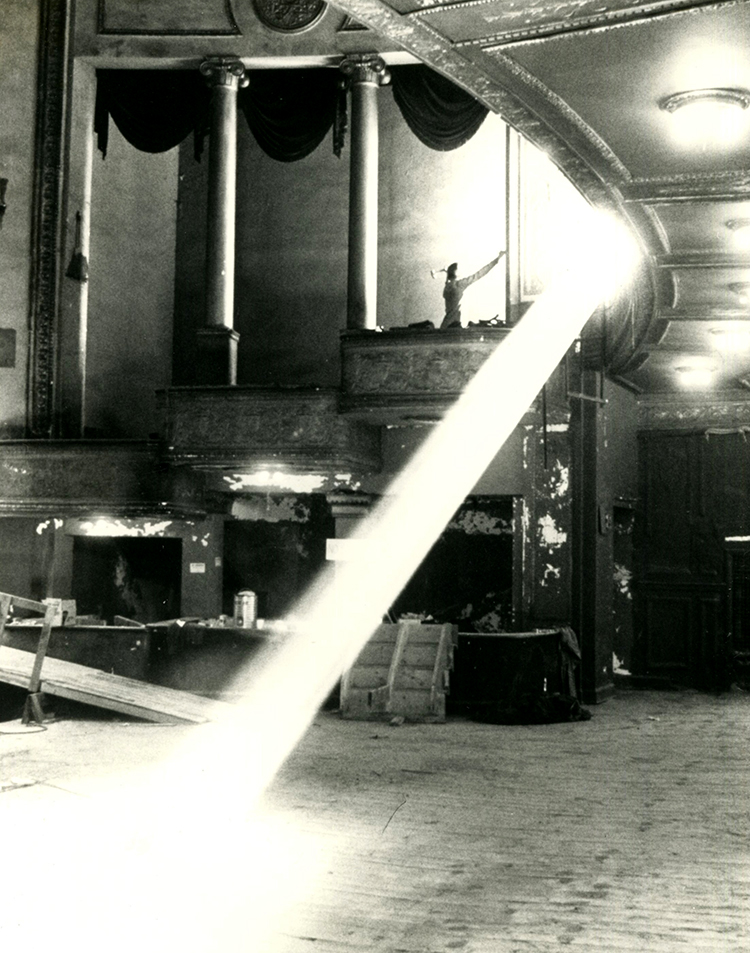
Interior restoration work, late 1970s. SC223 Folly Theater Collection.
The restoration process lasted about eight years and notoriously involved the excavation of nine tons of pigeon droppings. The total cost of restoration was $4.4 million. The Folly Theater finally reopened on November 7th, 1981, with Walter Cronkite serving as honorary chairman of rededication and burlesque superstar Tempest Storm in attendance. Mayor Richard Berkley flipped on the façade lights. The comedy Room Service was the first performance held at the newly reopened theater.
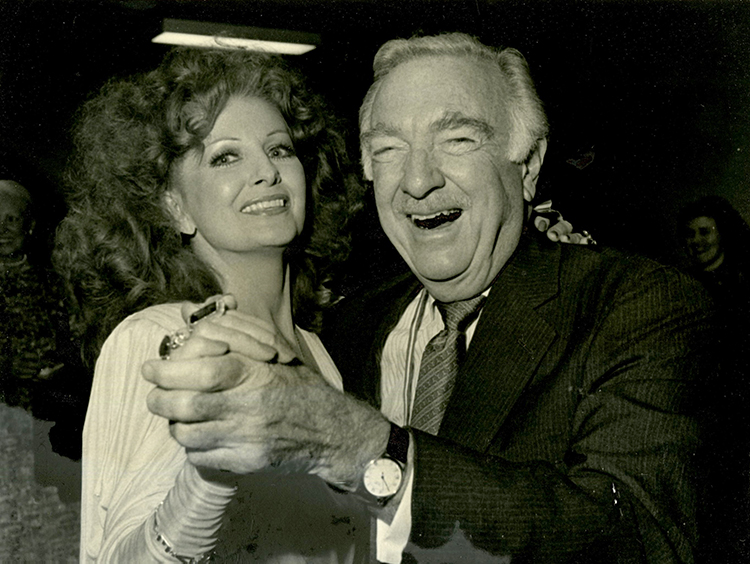
Burlesque legend Tempest Storm with CBS Evening News anchorman Walter Cronkite at the Folly Theater re-opening, November 7, 1981.
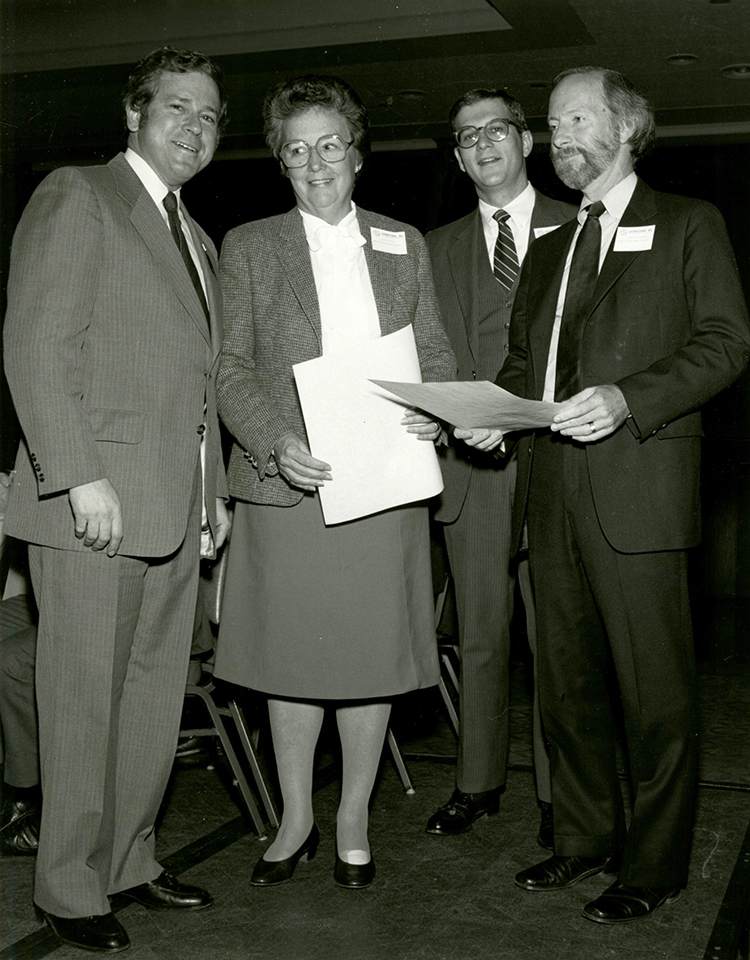
Mayor Richard Berkley presents Joan Dillon, Robert Dustman (Folly Theater Executive Director,) and Bob Berkebile (Principal Architect) with a Municipal Arts Commission Design Award in 1981.
THE FOLLY THEATER: A NEW ERA (1981-PRESENT)
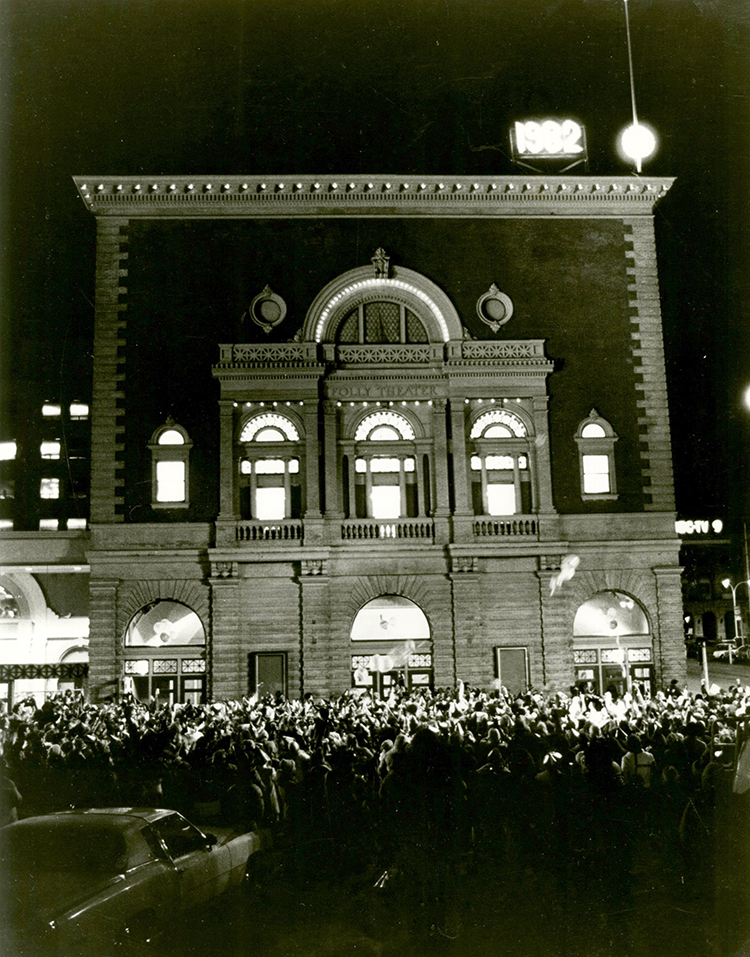
New Year's Eve party at the restored theater, January 1, 1982.
The Folly Theater proceeded to operate during the next four decades and beyond, hosting several signature series, including Folly Jazz and Friends of Chamber Music, and offering the theater for rent to the community. The theater has hosted the dance companies of David Parsons, Paul Taylor, and Alvin Ailey American Dance Theater, and countless performers including Dizzy Gillespie, Count Basie Orchestra, Pearl Bailey, Rosemary Clooney, Marcel Marceau, Yo-Yo Ma, Wynton Marsalis, and Gregory Hines. Often called “Kansas City’s Carnegie Hall” because of its acoustics, the Folly Theater continues to be a sought-after event space.
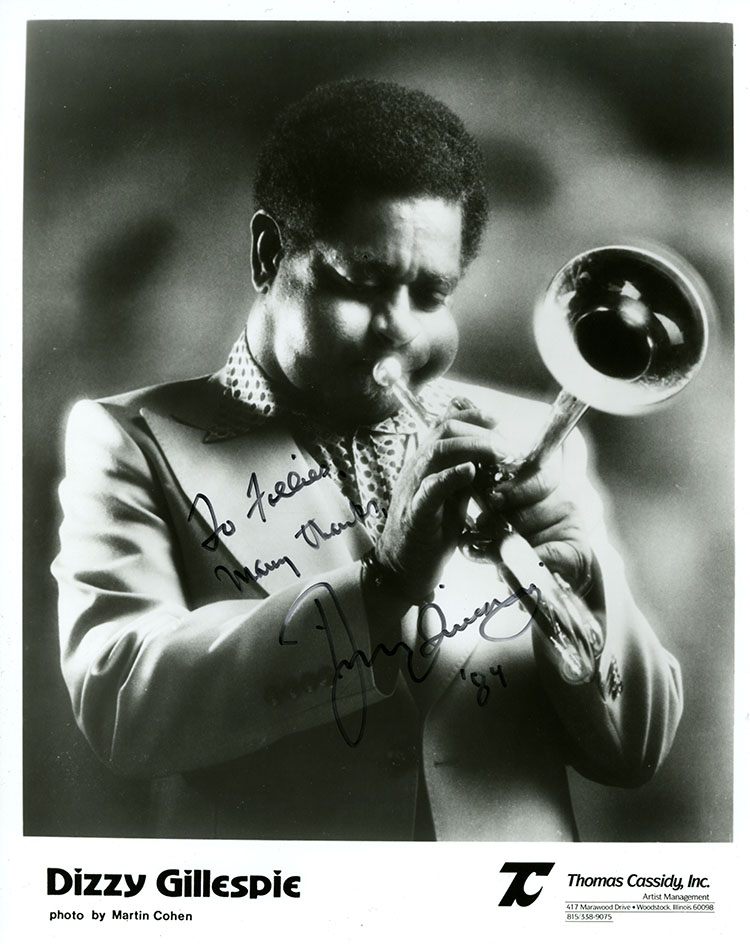
After the Folly Theater reopened in 1981, the theater began to host signature performance series, including the Twelfth Street Jazz Series. Legendary trumpeter Dizzy Gillespie played to sold out crowds in November of 1983 and again in March of 1989.

Cellist Yo-Yo Ma and pianist Emanuel Ax, 1984. SC223 Folly Theater Collection.

Alvin Ailey company dancers Elizabeth Roxas and Andre Tyson in Revelations, 1992. SC223 Folly Theater Collection.
Now, more of the theater’s 122-year history lies waiting to be discovered through the Folly Theater Collection. This treasure trove of documents, photographs, and artifacts is a key resource for researchers interested in vintage burlesque, local performing arts, architecture, and historic preservation. Contact the Missouri Valley Room to plan a research visit.
